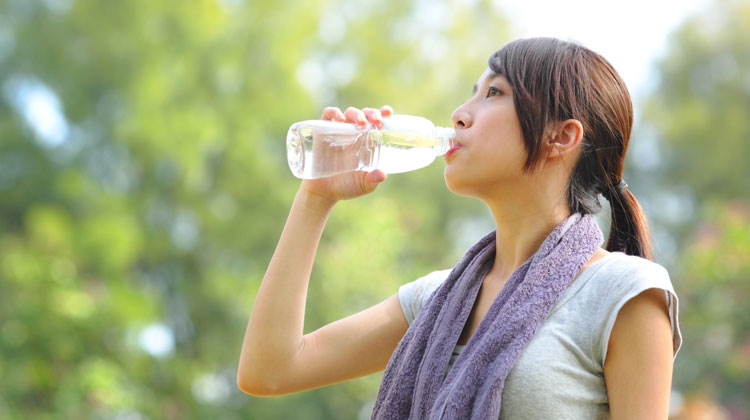


Our body normally cools itself by sweating. However, during hot weather, especially with high humidity, sweating sometimes just isn’t enough. If you are not careful, body temperatures can rise to dangerous levels and a heat illness can set in.
According to Dr Michael Wong, deputy medical director at Raffles Medical, heat-related illnesses occur along a spectrum, from mild to severe. Here are some common types:
1. Heat rash
Red clusters of pimples or small blisters that tend to appear in skin creases or areas where air cannot circulate. Most common in babies, young children, the elderly and the obese.
Cause: occurs when the skin’s sweat glands are blocked and sweat cannot get to the surface of the skin to evaporate, resulting in an inflammation.
Treatment: calamine lotion, over-the-counter creams/sprays and if the sweat glands are infected, antibiotics.
2. Heat cramps
Painful muscle contractions that occur during or after strenuous activity. Commonly affected muscles are the back of calves, quadriceps, hamstring and abdominal muscles.
Cause: dehydration, loss of sodium and/or potassium due to heavy sweating or extreme weather conditions.
Treatment: massage and rehydrate.
3. Heat syncope
A fainting episode or the inability to stand or walk that occurs in high temperatures. Symptoms include tunnel vision, pale and sweaty skin, weakness and a decreased pulse rate. Commonly occurs immediately after completing a strenuous activity like a race, workout or endurance event.
Cause: coming to a standstill immediately after activity or standing suddenly from a seated, lying or squatting position.
Treatment: recovery from heat syncope is usually relatively quick — within 10-15 minutes with minimal treatment and monitoring. Move into shade, elevate legs and rehydrate.
4. Heat exhaustion
Defined as a rise in core body temperature (usually between 37.7 to 40°C). Symptoms include a rapid heart rate, lower blood pressure, weakness, transient unsteadiness and coordination problems, light-headedness, profuse sweating, headache, abdominal cramps, nausea, vomiting, diarrhoea, persistent muscle cramps and temporary mild confusion.
Cause: associated with dehydration and electrolyte imbalances.
Treatment: move into shade, elevate legs, apply ice bags and rehydrate.
5. Heat stroke
Potentially fatal and the most severe form of heat-related illnesses. Characterised by a core temperature above 40°C. Symptoms include disorientation, irritability, irrational behaviour, confusion, rapid heart rate, low blood pressure, seizure, flushed skin, hyperventilation, dizziness, nausea, vomiting, weakness, muscle cramps, loss of muscle function and coma.
Cause: exposure to high temperatures and/or vigorous exercise in a hot environment for more than one hour, plus poor fitness.
Treatment: full immersion in cold (2 to 15°C) water for 30 minutes.
Who is more at risk during the hot season?
Elderly persons, small children, chronic invalids, those on certain medications or drugs (especially tranquilisers and anticholinergic) are particularly susceptible to heat-related illnesses. This is especially so during heatwaves in areas where a moderate climate usually prevails.
Dr Wong’s recommendations on how to keep cool:
· Take breaks during vigorous exercise.
· Drink plenty of fluids, especially water or sports drinks, before and after physical activity, at regular intervals.
· Exercise early in the day or later in the evening.
· Wear loose, lightweight, light-coloured clothes outdoors.
· Don’t stay in a hot car for long periods.
· Ensure adequate rest and a balanced diet prior to strenuous physical activity.
The good news is heat-related illnesses are largely preventable. By taking the above precautions, your daily and exercise routines do not have to be sidelined when the heat is on.